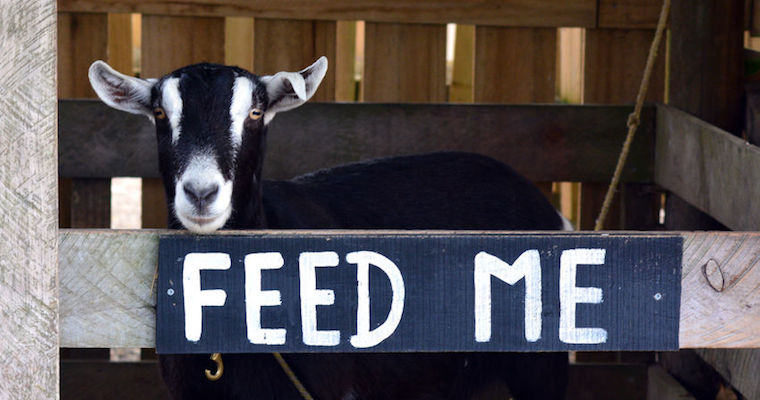
Your LinkedIn Profile vs. Your Resume
“Clairvoyant Humanist and Life Consultant.” I got a LinkedIn request from someone with this “title” the other day. Well, I am no clairvoyant. But I can predict one thing. The offbeat title will raise eyebrows — as well as suspicion about this person’s level of professionalism.
It got me thinking — do people not take their LinkedIn profiles seriously? Or at least not as seriously as their resumes?
Our team at Aha! is growing fast. We receive and review thousands of resumes and links to LinkedIn profiles each month. I can tell that most folks put a lot of effort into their resumes. But sometimes I am surprised by the LinkedIn profiles. Many look like they were thrown together much more cavalierly.
So I asked folks on LinkedIn what they think is the difference. People had interesting suggestions. Some noted that LinkedIn is for networking, not just job searches — so showing a little personality is fine.
With LinkedIn, you have the opportunity to create a meaningful representation of your experience within a global network of more than 500 million people. So what you put on your profile matters. Because unless you set it to private — people will find you.
This becomes even more important if you are searching for a job. You need to take your LinkedIn profile just as seriously as you do your resume. After all, hiring managers will ask to see both. I know we do.
So you need to update both with the same amount of effort and professionalism, with a consistent message. As one commenter put it on LinkedIn, “Your LinkedIn profile and your resume do not have to be exact copies of each other, but they should support the same story.”
Here are a few best practices when updating your LinkedIn profile and resume:
Header
LinkedIn: This is not Twitter, where you can play with a cheeky tagline. The text under your name is the first thing people will see when they visit your profile or when you send them a request to connect. So take it seriously. Be clear and specific — simply say what you do. If you are not able to use a current job title, make it easy by choosing words that show your experience level and industry. For example, “Experienced business and product development leader.”
Resume: The header on your resume should include your key information: name, email, phone number, and online portfolio or website (if you have one). Be sure to use a professional email. It is hard to take a candidate seriously when they have an address like bikingsuperstar@myfavoritetrails.com.
Summary
LinkedIn: Once people scroll past your header, this is the first thing they will see. So hold their interest by keeping this area conversational and professional — explaining what you do, your major accomplishments, and where you are headed. Focus on important keywords. This will position your profile in search results when recruiters are looking for candidates on LinkedIn.
Resume: The summary in a resume is optional. If you choose to include one, focus on being succinct. In one-to-two sentences at the top, clearly define your career objective. Keep it short in order to keep your resume to the desired one-page length.
Experience
LinkedIn: Give an overview of your career by listing your past companies, positions, and dates of employment. No need to bullet out everything you did in those roles. Instead, sum up each position with a sentence. But make sure to write it well. Really well. Make it easy for hiring managers to quickly skim your profile.
Resume: This is the place to get more detailed and focus on your results. Start with your most recent position and go back in chronological order, again listing the company, position, and dates. Include about three bullet points to highlight your achievements — focusing on those key metrics that prove how you made an impact.
Education and accomplishments
LinkedIn: Include the degrees you earned and from where. Be sure to link to the official pages of those educational institutions. (And please be clear in regards to whether you graduated or just took a few classes.) Highlight awards you have received. This is also the place to include any special projects you have worked on. But before you do, consider if those projects are aligned with your career direction or reflect something important about you that you want hiring managers to know.
Resume: Same as above (but obviously without the links). You can also note any additional accomplishments here — educational or career-wise. Though keep in mind that space here is limited, so focus on the ones that will have the most impact. For example, earning a prestigious award over being part of a committee.
Interests, organizations, and volunteer work
LinkedIn: Any organizations or influencers that you follow on LinkedIn will be listed at the bottom of your profile as part of your “interests.” Keep this in mind as you follow organizations and people on LinkedIn to avoid embarrassment or positioning yourself as unprofessional. The same goes for anything on LinkedIn that you “like” or comment on — that activity appears at the top of your profile. Use your best judgment.
Resume: This is optional on a resume. But if you have room, consider listing interests such as volunteer activities or hobbies. But just like special projects, make sure what you share is aligned with your career goals. And do not list so many that it looks like you have no time for work.
Think of your LinkedIn profile as a rich (and graphical ) view of who you are and what you do. If you thoughtfully structure your career story, hiring managers will likely check out the details.
Yes, this approach takes more time than a simple copy and paste of your resume onto LinkedIn. However, I would argue that it is worth the effort.
After all, you want to be noticed for your skills and experience. Not your wacky title.
How do you distinguish between your LinkedIn profile and resume?


